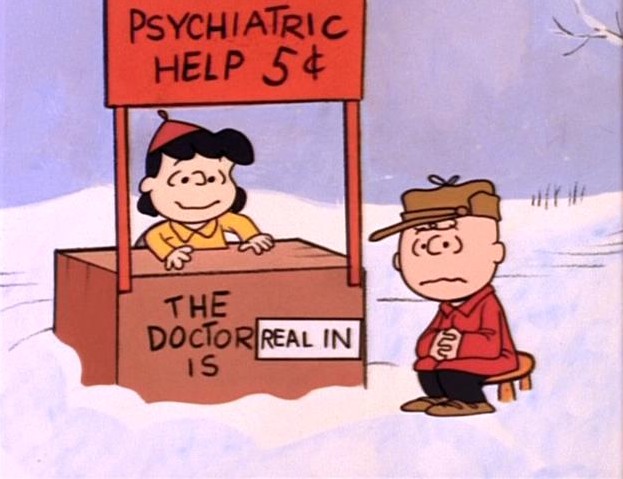
“Knowing your own mind is the solution for your mental problems.” ~ Lama Yeshe
~
Having issues is perfectly normal.
We all have personal problems, many that stem from our childhood and our upbringing.
Having been my own therapist for a while now, I’m convinced that we are capable of solving most of our own issues. By acknowledging our individual pain, we can heal the biggest part of ourselves.
I would like to clarify that the following steps are not a substitute for professional advice or a medical diagnosis. If you are dealing with mental health issues, please consider reaching out for professional help. I’m writing from my own experience in the hope that I can be of benefit.
Here’s how becoming my own therapist has helped me:
1. There’s a critical truth we need to understand.
Our problems don’t originate from one source. We have so many responsibilities—jobs, families, intimate relationships, finances—that equally impact us. However, it’s crucial to understand that we can’t always alter our circumstances. Our job might stress us out, but we can’t quit because we need the money. That said, our outside situation shouldn’t dictate our inside. Yes, we will always have problems, but how we perceive them is the first step to finding solutions—and we begin to solve these issues first in the mind.
2. Revisiting our childhood isn’t about blame.
All therapists agree that the first five years of our lives highly impact us as adults. This is why it’s imperative to go back to our past to understand our issues. Many of us would prefer to forget what is long gone, but the truth is that our unresolved childhood traumas don’t just disappear. They manifest in our personal experiences as we grow up. Instead of blaming our parents, or other pivotal figures from our childhood, we must understand that many of them did the best they could and most didn’t know any better at the time. Forgive whoever contributed to the development of your issues and take responsibility for solving them.
3. Our intimate relationships can be our greatest teachers.
Our personal issues are like mud at the bottom of a glass of water. We think the water is clean until we stir it up. Human relationships are often the spoon in our glass of water. Sometimes people we care about do us wrong, but instead of focusing on faults, we should look at the “mud” within us that they have stirred. Personally, my romantic relationships have triggered many of my internal issues. My choice of partners spoke extensively of my unresolved issues from my childhood. Observe how you react to other people—your opinions, actions, and patterns. They speak louder than you can imagine.
4. Examine your reactions—then reexamine them.
Observe the reactions that arise in difficult situations and ask yourself, “Why have I reacted this way?” If we wish to solve any personal issue, we need to discern the roots. If you suffer from anxiety, for example, try to determine the situations that make you feel anxious or the people who trigger your anxiety. Understanding what sets us off is crucial if we want to heal ourselves. It’s similar to solving a jigsaw puzzle. First, you count the pieces, prepare to set them up, and recognize the image you hope to create. Then you can move forward and begin to actually assemble the pieces.
5. It’s okay to feel all your feelings.
I have discovered that the most important part of self-healing is to allow our good and bad feelings to flow. Don’t brush your emotions under the rug. If you feel like crying, then cry. Emotions don’t go away until we release them. If we try to fight them, they stay. Learn to sit with your discomfort.
6. Accepting our imperfections is perfection in itself.
Being objective and honest with ourselves is challenging. However, with practice, we can learn how to remove our tainted glasses and observe our mind for what it is. Our ego doesn’t like imperfection—it constantly seeks flawlessness and excellence. But that isn’t our reality, which is why it’s important to stop pretending that we are anything but beautifully imperfect humans.
7. But don’t get attached to your flaws.
Some people acknowledge their problems, but they can’t seem to take a leap forward. Getting attached to our painful stories is common—pain is as addictive as pleasure. This is why some of us stay in destructive relationships or dreadful jobs; we become accustomed to toxicity. Start by not creating a story around your pain. Acknowledge how you feel without giving these feelings a personal narrative. Keeping a healthy distance from your issues allows you to separate who you really are from the stories you’ve grown accustomed to repeating.
8. Keep a journal.
I can’t stress enough how crucial it is to keep a journal. You don’t have to be a professional writer or a poet. You don’t even have to write endless pages. Just write what you feel. It’s tough to look at our emotions and problems objectively, but reading what we have written allows us to perceive our situation differently.
9. Be patient.
If you were to visit a therapist, you would probably need more than one session in order to see progress. Healing ourselves is not an overnight process. Be patient and gentle with yourself as you make breakthroughs. Reflect on the lotus flower, which beautifully emerges from the mud in order to shine. You can only see the light when you know how to deal with the mud.
~
~
Author: Elyane Youssef
Image: frankieleon/Flickr
Editor: Nicole Cameron
Copy Editor: Callie Rushton






Read 1 comment and reply